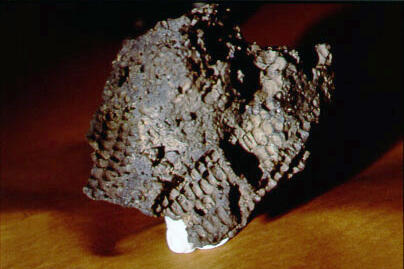Sunset Crater, located about 25 km (15 mi) northeast of Flagstaff, Arizona, is one of the youngest scoria cones in the contiguous United States and is the youngest of about 600 such cones in the San Francisco Volcanic Field.

Sunset Crater erupted about 1085 A.D. The cone is named for the topmost cap of oxidized, red spatter, which makes it appear bathed in the light of the sunset. In the 1920's, H.S. Colton saved the cone from severe damage by averting the attempt of a Hollywood movie company to blow it up in order to simulate an eruption. This led to the establishment of the Sunset Crater Volcano National Monument.
The eruption of Sunset Crater began as an approximately 11-km-long fissure of lava fountaining activity, called a "curtain of fire." The Sunset Crater scoria cone became the focus of Strombolian- style fountaining activity and sustained violent-Strombolian eruption columns, which grew the cone and deposited widespread tephra fall. At the same time, lava flows issued from the cone vent and reached up to 11 km (nearly 7 mi) from the source. In the end, the eruption produced an approximately 300-m- (1000-ft-) high cinder cone, a widespread tephra fall deposit (2300 km2, 890 mi2) with thicknesses of up to 12 m (40 ft), and three lava flows that cover about 8 km2 (3 mi2).
Indigenous communities living in the area at the time of the eruption were certainly impacted. Archeological records indicate that the area was densely populated with independent groups of humans with permanent habitation sites and agricultural fields, which were abandoned as a result of the eruption. The population moved to a new environment at a lower elevation just a few tens of kilometers away, which required them to enact technological changes that allowed the population to thrive. There is evidence of humans interacting with the volcano as it erupted – there are pieces of Sunset Crater scoria with impressions of corn kernels and husks. These “corn rocks” are believed to have been made when people placed ears of corn near hornitos, spattering vents that form above lava flows or tubes. As spatter erupted from these vents it covered the corn then cooled to create a corn mold. Some of these rocks were found in the walls of habitation structures greater than 4 km (2.5 mi) away from the closest Sunset lava flows.
Sunset Crater, located about 25 km (15 mi) northeast of Flagstaff, Arizona, is one of the youngest scoria cones in the contiguous United States and is the youngest of about 600 such cones in the San Francisco Volcanic Field.

Sunset Crater erupted about 1085 A.D. The cone is named for the topmost cap of oxidized, red spatter, which makes it appear bathed in the light of the sunset. In the 1920's, H.S. Colton saved the cone from severe damage by averting the attempt of a Hollywood movie company to blow it up in order to simulate an eruption. This led to the establishment of the Sunset Crater Volcano National Monument.
The eruption of Sunset Crater began as an approximately 11-km-long fissure of lava fountaining activity, called a "curtain of fire." The Sunset Crater scoria cone became the focus of Strombolian- style fountaining activity and sustained violent-Strombolian eruption columns, which grew the cone and deposited widespread tephra fall. At the same time, lava flows issued from the cone vent and reached up to 11 km (nearly 7 mi) from the source. In the end, the eruption produced an approximately 300-m- (1000-ft-) high cinder cone, a widespread tephra fall deposit (2300 km2, 890 mi2) with thicknesses of up to 12 m (40 ft), and three lava flows that cover about 8 km2 (3 mi2).
Indigenous communities living in the area at the time of the eruption were certainly impacted. Archeological records indicate that the area was densely populated with independent groups of humans with permanent habitation sites and agricultural fields, which were abandoned as a result of the eruption. The population moved to a new environment at a lower elevation just a few tens of kilometers away, which required them to enact technological changes that allowed the population to thrive. There is evidence of humans interacting with the volcano as it erupted – there are pieces of Sunset Crater scoria with impressions of corn kernels and husks. These “corn rocks” are believed to have been made when people placed ears of corn near hornitos, spattering vents that form above lava flows or tubes. As spatter erupted from these vents it covered the corn then cooled to create a corn mold. Some of these rocks were found in the walls of habitation structures greater than 4 km (2.5 mi) away from the closest Sunset lava flows.



